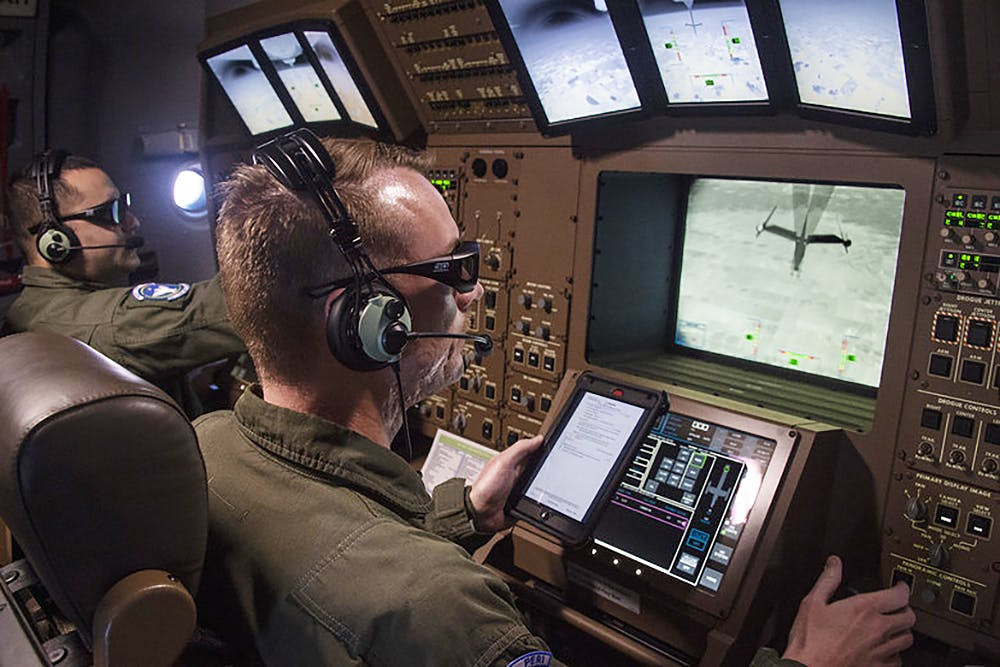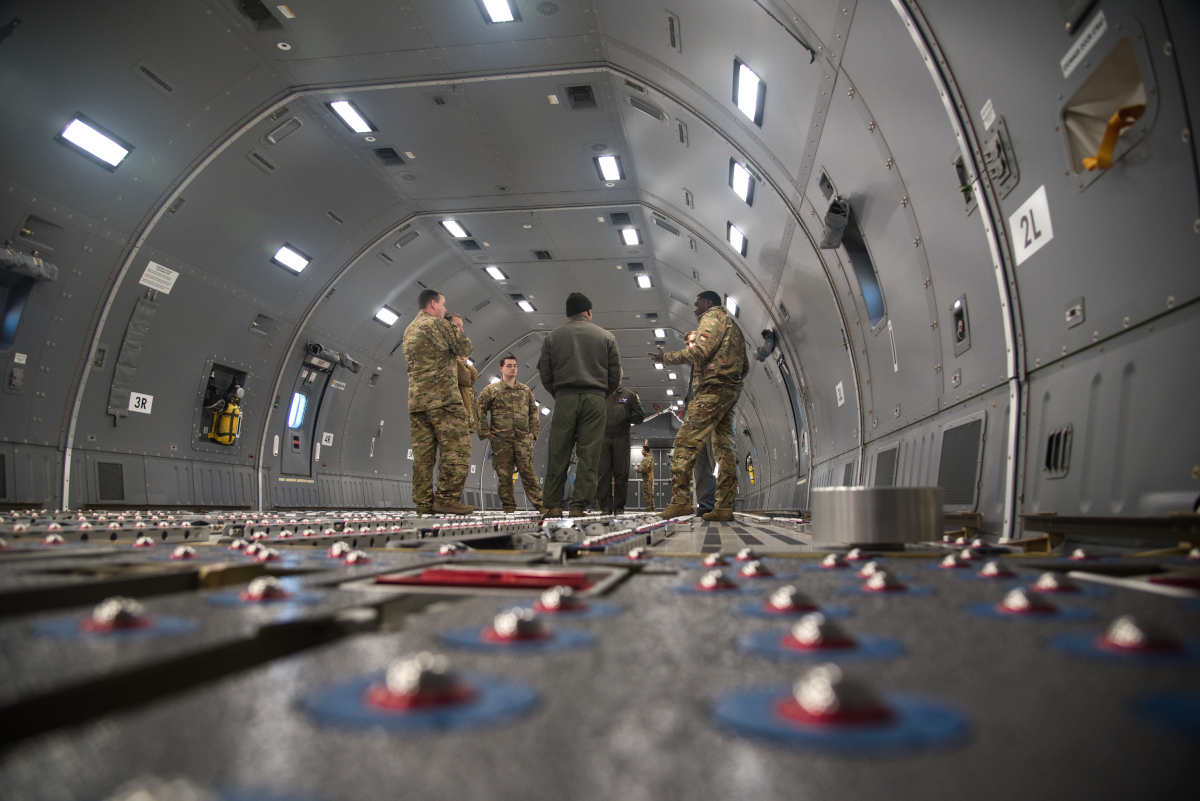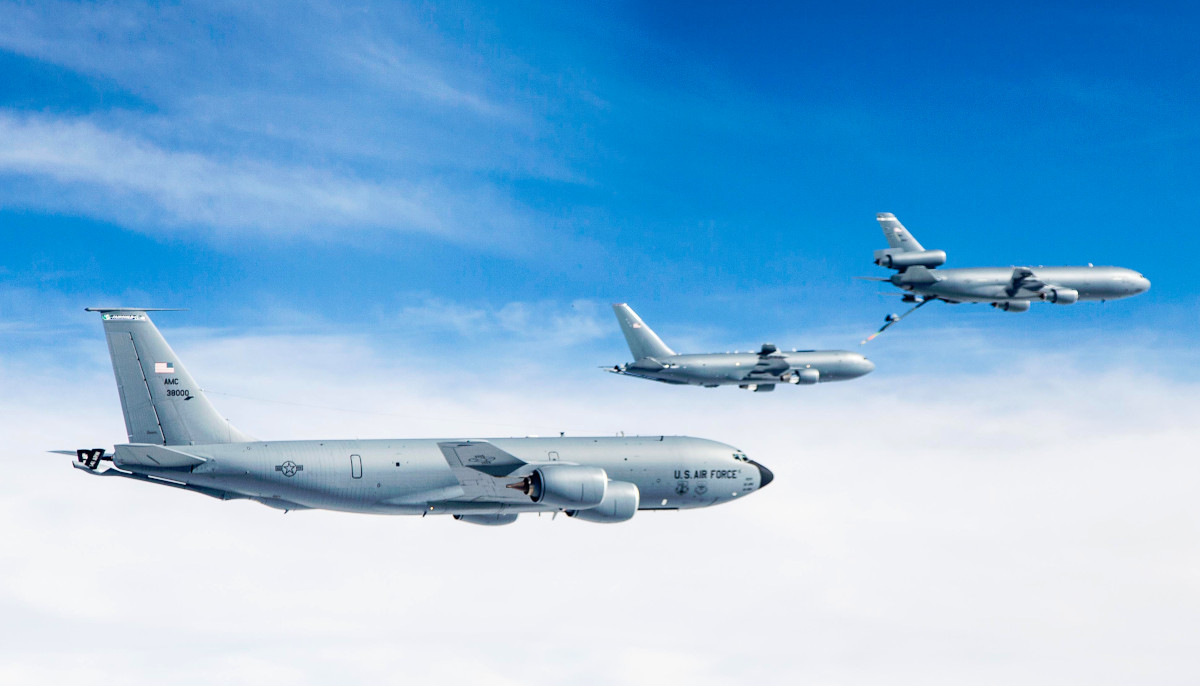The U.S. Air Force has admitted that it will not be able to deploy its new KC-46A Pegasus aerial refueling tankers on operational missions for at least another three to four years, due to persistent technical and quality control problems. This comes as the service continues to take delivery of the aircraft, which have hundreds of issues still left to fix, and that appear to have extremely limited utility in the interim. The mounting delays could have cascading impacts on its plans to retire older KC-135 and KC-10 tankers in the coming years.
U.S. Air Force General Maryanne Miller, head of Air Mobility Command, which oversees the bulk of the service’s cargo and tanker fleets, gave reporters the update on the long-troubled KC-46 program on the last day of the Air Force Association’s main annual convention outside Washington, D.C., on Sept. 18, 2019. The service finally accepted the first Pegasus from the manufacturer, Boeing, in January 2019, years behind schedule, after the company agreed to a roadmap for resolving significant remaining technical problems.
At that time, there were three so-called “Category One deficiencies,” the most serious category covering problems that prevent an aircraft from properly carrying out core missions. One relates to the boom operator’s remote vision system (RVS), one has to do with the aircraft’s boom, and the third is a boom problem that may be tied to the RVS issue. On Sept. 11, 2019, the Air Force revealed that a fourth Category One deficiency, having to do with the aircraft’s cargo locking system, had also emerged and would need fixing.
This is to say nothing of quality control problems on Boeing’s production line that have led to hazardous foreign object debris ending up inside completed planes, which, in turn, have necessitated extensive and costly inspections. This year, the Air Force stopped accepting KC-46s on multiple occasions over FOD, leading to additional delays. The service’s original plan was to have received 18 of an initial batch of 52 Pegasus tankers by the end of 2017. As of September 2019, the service had taken delivery of 18 aircraft and accepted future delivery of another one.

“When we accepted the KC-46 with known Cat One deficiencies, we did so with the belief that it offered the fastest route to achieve limited operational capability and meet an urgent warfighter requirement,” General Miller said. “Eight months have passed since our first delivery and Boeing has not made the progress needed in addressing this deficiency,” she added, referring to the RVS specifically.
“This is a pass-fail requirement,” she continued. “We’ll get it [the KC-46A] in the fight in the next four years.”
The RVS has been a particularly glaring issue, given that it is central to the Pegasus’ ability to perform its core mission. Unlike previous Air Force tankers, where an operator would lie or sit in the tail section of the jet to control the boom during refueling operations, that individual now sits in the main cabin.
They control the boom via a complex stereoscopic vision system that blends two- and three-dimensional video feeds from electro-optical and infrared cameras mounted at the rear of the plane. The issue is that testing has shown that this arrangement does not always give the operator, who has to wear special 3D glasses, an accurate sense of where the boom actually is, which can lead them to move it erratically, raising the risks that it may end up damaged from the excessive forces or smack into the receiving aircraft. General Miller said that boom operators, who are responsible for an “inherently dangerous” job, have the equivalent of 20/50 vision and limited depth perception using the current system. In medical terms, 20/50 vision is a level of near-sightedness where a person is able to see something clearly at 20 feet that an individual with unimpaired vision can see without issue at 50 feet.

One of the other Category One deficiencies specifically has to do with a separate problem of the boom scraping against planes during refueling, which the Air Force believes is a direct result of the RVS issues. You can read more about how the RVS is supposed to work and the problems it has experienced so far in this past War Zone piece.
As part of the acceptance agreement earlier this year, Boeing agreed to redesign the RVS entirely, a process the Air Force has already acknowledged could take between three and four years to complete. General Miller’s statements would seem to confirm the War Zone‘s past analysis that this could only prevent the tankers from being able to conduct meaningful real-world operations in the interim. It is very probable that the service will also need to put boom operators through at least a remedial training regimen when the new RVS system gets installed on the aircraft due to what could be substantial differences in its functionality over the existing arrangement, which would contribute to this delay in reaching initial operational capability.
There is a separate Category One issue with the boom itself, where it has difficulties staying connected to the receiving aircraft, especially in lower speed flight regimes. This has notably been an issue in testing with fully-loaded A-10 Warthog ground-attack aircraft, though it could potentially impact the refueling of other slower-flying planes. The Air Force has accepted that Boeing’s current design met its original requirements and has agreed to pay the planemaker $55.5 million to make the necessary changes to the boom. On Sept. 16, 2019, the Department of Defense Inspector General announced it would be investigating if the service adequately followed the appropriate systems engineering processes when it developed the boom requirements. Whatever the investigators find, the Air Force hopes to have the boom issue resolved by 2021.

It’s important to note that the KC-46A also has an important secondary cargo and personnel transport mission, as do the Air Force’s existing KC-135s and KC-10s, which it could potentially perform in the interim. However, the service has now banned the aircraft from carrying any such loads until Boeing can resolve a problem with cargo locks on the main cabin floor that emerged during a recent long-range, multi-leg, operational test and evaluation flight.
“Prior to departing for each of these missions, aircrew fully installed, locked and thoroughly inspected each restraint, and performed routine inspections of the restraints in flight,” U.S. Air Force Colonel Damien Pickart, an Air Mobility Command spokesperson, told Defense News earlier in September 2019. “Despite these safety measures, the unlocking of cargo floor restraints occurred during flight, although no cargo or equipment moved and there was no specific risk to the aircraft or crew.”
Unsecured cargo runs the risk of shifting in flight, potentially injuring personnel inside the aircraft or causing physical damage. Depending on the exact load configuration, a dramatic shift in weight could prove catastrophic to the plane’s performance and lead to a crash or other serious mishap.

There exact root cause of this issue is unclear and there is no firm schedule for when the Air Force expects Boeing to resolve it, though it is “a fairly simple design solution,” Jamie Burgess, the KC-46 program manager at Boeing, told Defense One. The Air Force said that it might use cargo straps to secure cargo inside the aircraft until then.
What this means, in the meantime, is that the KC-46s will not be able to deploy operationally as either tankers or transports and will have extremely limited capabilities to perform those functions even in non-combat scenarios, such as during training exercises or supporting testing of other aircraft. The Pegasuses were notably absent from Air Mobility Command’s recent Mobility Guardian 2019 exercise, the largest of its kind since the Air Force rebooted the annual event in 2017.
This is the Air Force’s premier air mobility exercise, which also involves aircraft and personnel from multiple foreign allies and partners. The ability to provide large scale tanker and other logistical support during sustained operations is a growing concern within the service. Mobility Guardian and similar, smaller exercises are part of a larger effort to ensure that the Air Force can rapidly deploy to and operate in a particular theater of operations, potentially in the face of significant hostile opposition during a major conflict, issues
The War Zone
has previously covered in-depth.

General Miller also said that there were another 500 smaller, unspecified issues with the aircraft that still need to be resolved, as well. Given the Air Force has already accepted 19 of the aircraft and is expecting to take delivery of three more tankers every month for the foreseeable future, it is unclear how much it might ultimately cost and how much time it could take the Air Force to bring the entire fleet up to the same standard.
The kind of acquisition process, known as concurrency, has caused significant issues in the operation and sustainment of F-35 Joint Strike Fighter fleets across the U.S. Air Force, Marine Corps, and Navy. It is worth noting that, unlike the F-35, the Air Force has a fixed contract with Boeing for the KC-46, which has forced the company to pay millions out of pocket to resolve various issue already. The service has also withheld more than $500 million to date over the firm’s failure to meet the contract’s stipulations.
Delays in getting the KC-46s operational are also forcing the Air Force to reconsider its plans to begin retiring existing KC-135s and KC-10s in the coming years. “I’d love to slow down the retirement [of the KC-135] because I have to keep booms in the air,” General Miller remarked.

This is at odds with written responses that Barbara Barrett, the present nominee to become the next Secretary of the Air Force, provided to Congress last week. She told legislators that it was her understanding that the Air Force would hit its internal threshold to being retiring tankers in November 2019.
“Once tanker inventories reach 479, it is my understanding that the Air Force will begin divesting legacy tankers (96 KC-135s and all 59 KC-10s),” she wrote. “At the current delivery rate of three KC-46 aircraft per month, I understand the Air Force expects to reach that number by November.”
It’s hard to see how this could still be the case given the details that General Miller has now disclosed. While the Air Force is certainly continuing to take deliveries of KC-46s, by Air Mobility Command’s own assessment, those aircraft are simply not capable of reasonably performing the tanking mission in their present configuration.
It’s also not clear what this might mean for Boeing’s existing and potential foreign sales of the Pegasus. Japan has ordered two KC-46s and is interested in buying four more. Israel is reportedly leaning toward buying the tankers, as well.
Hopefully, the present schedule will hold and within four years the KC-46 may finally meet basic expectations. For the time being, however, the service will have to continue to rely on its KC-135 and KC-10 fleets, while it is stuck paying to take delivery of and sustain new tankers with hundreds of remaining issues that it largely can’t use.
Contact the author: joe@thedrive.com
